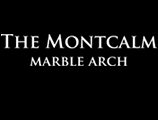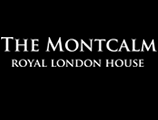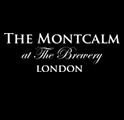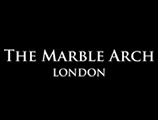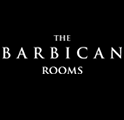With its history of nurturing and housing some of the best artists in the world, art schools such as the Royal Academy, Central St Martins and Slade have become synonymous with the most talented creatives out there. The city is teeming with not just artists in the traditional sense but creators of all kinds and this is one of the key reasons why the English capital is such a popular tourist destination for spa breaks London guests.
With world-renowned theatre and the best in music and movie events, the artworld can sometimes be overlooked. The reality is though, that just beneath the surface of London you’ll find historic and contemporary pieces of sculpture, painting and multimedia creations that are recognised around the world as game changers. Whether you’re an art connoisseur or not, you’ll probably recognise some of these pieces, and their place in London galleries attests to the proud heritage of creativity that the city has earned over the years. For guests of the Montcalm Club looking for experiences you could only find in London, these are some of the most famous and important artworks you’ll find in the city.
The Electric Chair By Andy Warhol – Tate Collection
Part of the Tate Collection, this stunning piece from Andy Warhol’s painting collection explores the artist’s political stance on capital punishment, depicting an ominous electric chair in a dark and shadowy room. Created using acrylics on top of screen prints, this dark and foreboding piece is best known for being created around the time of New York City’s last series of executions during the early 60s.
The Cards PlayersBy Paul Cezanne – Courtauld Gallery
The French post-impressionist is best known for his beautiful drawings of Brittany but this stunning work of a claustrophobic interior also shows an early focus on bodies as landscape, which would go on to influence his compositions of mountains. Located in the Courtauld Gallery, the Cards Players fits right into the contemporary and experimental and playful nature of the art museum and school.
Girl At The Window By Rembrandt – Dulwich Picture Gallery
Known as “London’s Mona Lisa” due to the anonymity of the subject, the Girl At The Window is a classic example of Rembrandt’s detailed, beautiful portraits. The often overlooked Dulwich Picture Gallery is located in Southeast London, close to the beautiful Dulwich Park and is easy to reach via national rail services from Montcalm London hotel special offers in East and West London.
A Bigger Splash By David Hockney – Tate Britain
A giant on the British contemporary art scene, it’s unsurprising that A Bigger Splash, one of Hockney’s most famous works, is located in the Tate Britain. Painted in 1963 on the verge of the youth revolution so lovingly associated with the period, A Bigger Splash is a perfect encapsulation of youthful desire and fun, care free vibes – hopefully great inspiration for your trip to London!
The Visit By Willem de Kooning – Tate Collection
Full of expressive strokes and exciting energy, The Visit encapsulates everything that this Dutch New Yorker artist is known for. Held in stasis in the Tate Collection, this painting may not be on display right now, but will no doubt find its way into the Tate Modern where it fits in so easily amidst the expressionism and experimentalism that the Thameside Gallery so encompasses.
Christ Mocked By Hieronymus Bosch – National Gallery
Two decades before he painted his more famous Garden of Earthly Delights, this equally dreamlike depiction of Jesus being teased before his crucifixion is a beautiful and suitably otherworldly depiction of a famous New Testament story. The realism adds to the uncanniness, and it really stands out amidst the National Gallery’s mythical and religious paintings from the Mediaeval period.
Surprised By Henri Rousseau – The National Gallery
You’ve probably seen this one on T Shirts and bags, because the landscape of this tropical haven stimulates the imagination. The expressive Tiger in the drawing definitely does look surprised, as the painting title clearly states, and this dark yet inviting landscape stands out against the National Gallery’s more formal pieces.
Rain, Steam And Speed By JMW Turner – National Gallery
If there was an artist who would have enjoyed the delights of a West End restaurant drinks menu, it’s JMW Turner. But his drink-heavy personal life did not affect his art, which reflected the industrial revolutions of the time. The artist’s penchant for painting action and motion in various types of vehicle are on full display in this beautiful smoke-filled train painting that is both dramatic and cathartic.
The Ghost Of A Flea By William Blake – Tate Britain
Probably the most minute artwork on this list, the aptly named Ghost Of A Flea is only a few inches in height and depicts the soul of the flea as a vampiric monster gliding towards a pool of blood. The size does not hinder the extravagance and carnality of this piece, a feeling shared by many of this great artist’s pieces. The Tate Britain is the perfect home for this radical and revolutionary 19the century artist and writer.
‘Eine Kleine Nachtmusik’ – Dorothea Tanning – Tate Modern
Dorothea Tanning always had a penchant for the surreal, and this strange piece at the Tate Modern is a vivid and disturbing testament to the volatility and fragility of youth. The title comes from the title of a concerto piece by Mozart and Eine Kleine Nachtmusik was written during Tanning’s habitations of the bleak, flat landscapes of Arizona.
IKB 79 By Yve Klein – Tate Collection
Inspired by the colour of the sky, Yve Klein created his own colour palette – by which this specific colour is named “Klein Blue” and flooded whole canvases with them. Both oppressive and freeing, this is minimalism and maximalism conjoined in a throbbing pool of energy.
Weeping Woman By Picasso – Tate Modern
Probably Picasso’s most famous painting in London, the Tate Modern suitably holds this political and devastating piece of cubist art. Depicting grief in all its grotesqueness, the fragemented face of this woman is that of a mother who’s son was killed in the town of Guernica by fascist bombs in the Spanish Civil War of the 1930s’.








